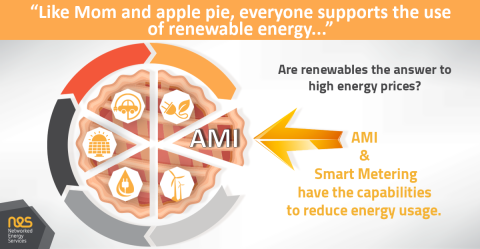
Are renewables the answer to high energy prices?
Jul 14, 2022Like Mom and apple pie, everyone supports the use of renewable energy. Unfortunately, renewables cannot resolve the current problem of high energy prices. Incorporating renewable energy (e.g. solar panels) into a utility’s generation portfolio is a long term strategy that requires regulatory support, new investments, and constructing infrastructure upgrades to the electric grid.
So, how can utilities try to alleviate the current energy price situation? One opportunity is to reduce energy demand and usage. So rather than creating more generation, utilities can decrease energy prices by reducing customer demand for energy. Utilities can accomplish this by reducing system losses and encouraging energy conservation. AMI and smart metering has the capabilities to help utilities reduce energy usage by addressing both of these objectives. In fact, for many utilities, the solution already exists, since they have previously deployed AMI and smart meters for their customers, but may not have implemented these types of advanced functionality.
While not all AMI solutions have the same capabilities, some solutions offer functionality that enables utilities to reduce customers’ energy usage. One feature is to reduce losses by identifying the sources of technical and non-technical losses. In order to support this functionality, the solution needs to create a local communication network for each distribution transformer, and maintain the meter to transformer grid topology of the low voltage grid. By comparing usage at all metering points with the distribution transformer, losses can be identified, addressed, and eliminated.
Another feature is to utilize load control to turn off HVAC, EV charges, storage heaters, and other large energy using appliances at energy peak system periods. Some smart meters include load control relays that can be used to cycle usage for large energy using devices. This can be done based on a time of day schedule, energy tariff basis, or using remote commands based on customer agreements to better balance generation and usage, and quickly shed load if required or desired.
These types of features help reduce energy usage. And considering basic economics rules of supply and demand, the result is a lower customer demand for energy that will help drive lower energy prices.




